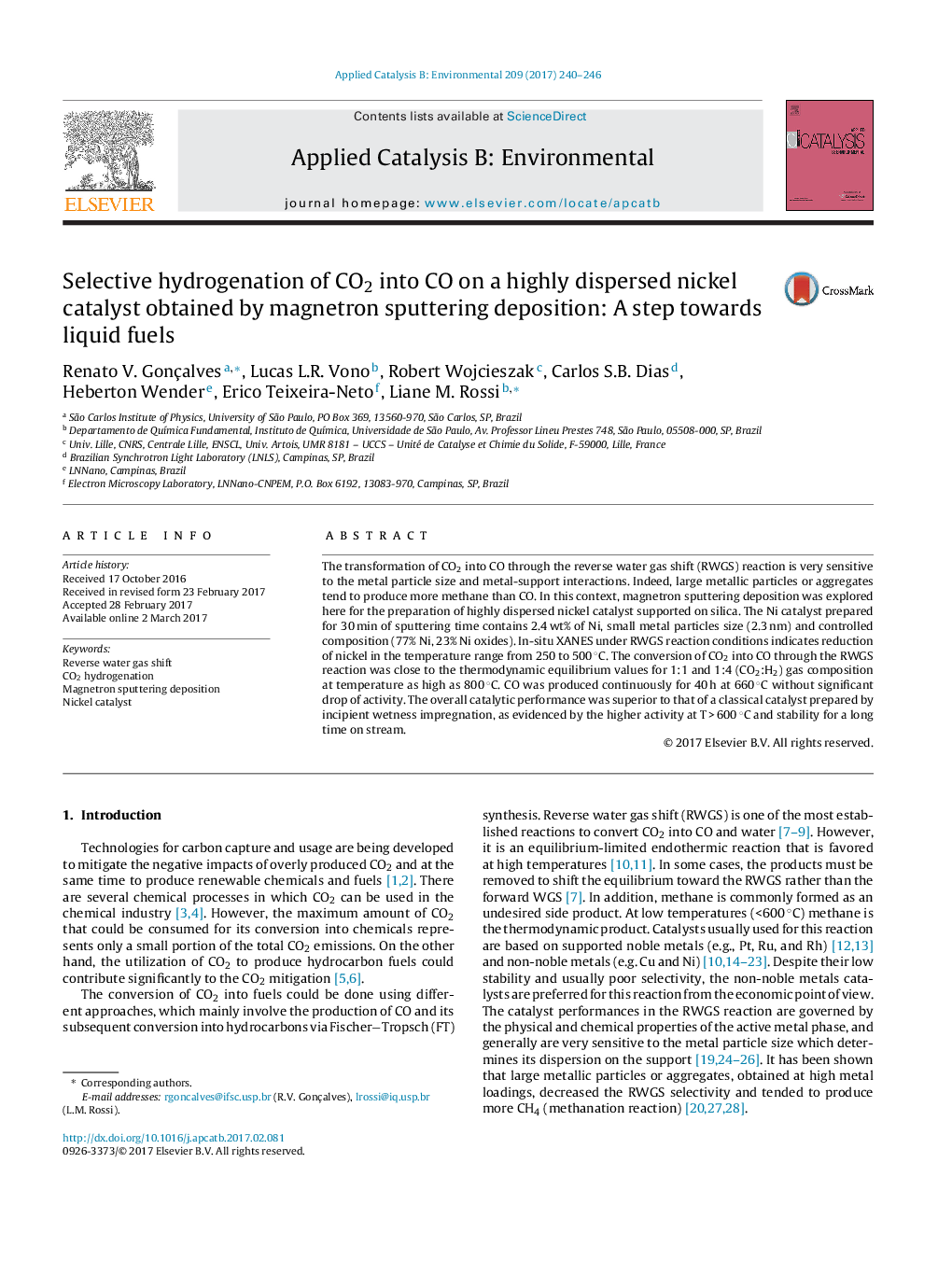| Article ID | Journal | Published Year | Pages | File Type |
|---|---|---|---|---|
| 6454166 | Applied Catalysis B: Environmental | 2017 | 7 Pages |
â¢Magnetron sputtering deposition is a versatile method to supported nickel catalyst.â¢The Ni catalyst is more active for the RWGS and less active for the methanation reaction.â¢In situ XAS revealed that a minor NiO phase is reduced under RWGS reaction condition.
The transformation of CO2 into CO through the reverse water gas shift (RWGS) reaction is very sensitive to the metal particle size and metal-support interactions. Indeed, large metallic particles or aggregates tend to produce more methane than CO. In this context, magnetron sputtering deposition was explored here for the preparation of highly dispersed nickel catalyst supported on silica. The Ni catalyst prepared for 30 min of sputtering time contains 2.4 wt% of Ni, small metal particles size (2.3 nm) and controlled composition (77% Ni, 23% Ni oxides). In-situ XANES under RWGS reaction conditions indicates reduction of nickel in the temperature range from 250 to 500 °C. The conversion of CO2 into CO through the RWGS reaction was close to the thermodynamic equilibrium values for 1:1 and 1:4 (CO2:H2) gas composition at temperature as high as 800 °C. CO was produced continuously for 40 h at 660 °C without significant drop of activity. The overall catalytic performance was superior to that of a classical catalyst prepared by incipient wetness impregnation, as evidenced by the higher activity at T > 600 °C and stability for a long time on stream.
Graphical abstractDownload high-res image (338KB)Download full-size image
